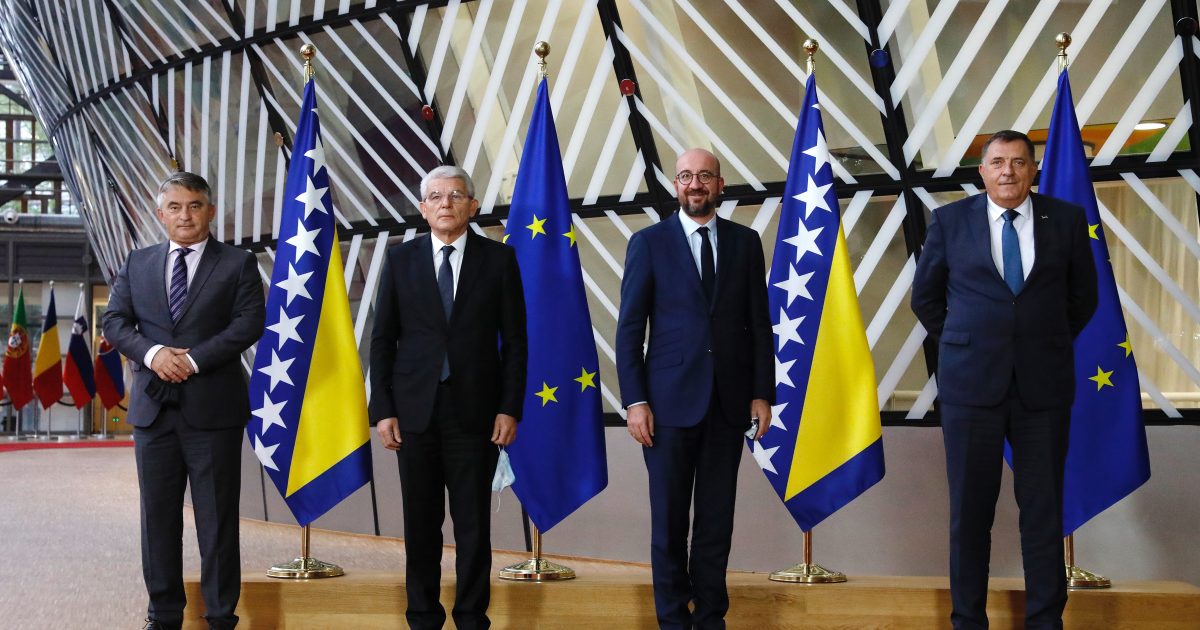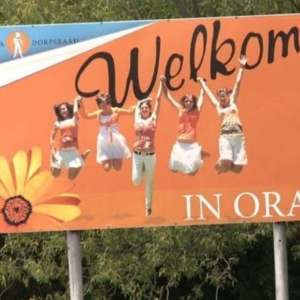You may think that one president is enough to deal with, but imagine having three. Bosnia and Herzegovina (BiH), a Western Balkan country with a population of three million, has an unparalleled tripartite presidential system. Yet even three presidents cannot resolve Bosnia’s dilemma of ethnic division, nor promote significant economic development.
Historical Background
Bosnia’s turbulent history, riddled with political conflicts, has frequently thrust it into the global spotlight. The first time was in 1914, when a Bosnian Serb student assassinated Austrian Archduke Franz Ferdinand in BiH’s capital city, Sarajevo, sparking World War I. Subsequently, a devastating civil war from 1992 to 1995 again brought Bosnia to the world’s attention. When BiH declared independence from the former Yugoslavia with international recognition, an armed conflict erupted among its three main ethnicities: Serb, predominantly Orthodox; Croat, mostly Catholics; and Bosniak, who are Muslims. Serb Bosnians, in opposition to Bosnia’s secession, attempted to secure ethnic Serb territory with the backing of the Yugoslav People’s Army. Warfare soon spread throughout the entire country, resulting in the death of 100,000 people and the displacement of over two million.
The Dayton Accords, an international agreement signed in 1995, marked the end of the bloody war and guaranteed Bosnia’s sovereignty. It forms the legal basis for today’s tripartite presidency, allowing each ethnicity to choose their own president representing their interests. Moreover, it established two political entities within the country: the Federation of Bosnia and Herzegovina and the Republika Srpska, the latter of which was meant to “safeguard the rights of the Serb as a minor ethnicity,” according to Al Jazeera. In addition to the three state presidents, each entity also elects its own elected president and prime minister to manage entity affairs. The Accords also introduced the role of the Higher Representative, usually a diplomat from a European Union (EU) nation, to represent countries involved in the Dayton Accords and oversee its implementation in Bosnia.
Recent Crisis
Earlier this September, Milorad Dodik, the current president of Republika Srpska and the former Serb member of the tripartite presidency, announced his intentions to reject any decisions made by the Higher Representative, the indispensable figure for efforts toward peace in Bosnia, and threatened to arrest this envoy should he enter Republika Srpska. On September 7, the Bosnian national court indicted Dodik for defying the Higher Representative, thereby violating the state constitution. Dodik again dismissed the indictment and refused to recognize prosecutions by the “unconstitutional court,” since the national court was not directly established by the Dayton Accords but rather by the previous Higher Representative.
This is not the first time this controversial political figure has flouted governmental authority. Back in November 2021, Dodik made a failed attempt to secede Republika Srpska from the rest of Bosnia as an independent state, potentially seeking to merge it with Serbia, echoing Serbian President Aleksandar Vučić’s nationalist ideology of the “Greater Serbia.” Dodik’s diplomatic strategy has been strongly leaning toward the eastern neighbors, Serbia and Russia, while challenging the involvement of NATO and EU states in the Western Balkans.
With persistent disregard for court decisions and intentions to secede, Dodik has consistently undermined the fragile integrity of Bosnia and eroded peacebuilding efforts by the local and international community. Ironically, although Dodik is playing hardball today, EU officials initially perceived him as a moderate democratic leader and a “breath of fresh air” when he was appointed as prime minister in 1998, and his political stance took a gradual shift over his career. Dodik’s drastic change becomes easier to understand with a closer look at Bosnian society today.
Social Reality
Having served as the president of Republika Srpska for three terms with an approval rating of 47% in the 2022 general election, Dodik resonated with a significant portion of Republika Srpska’s population. He reflects the prevailing nationalism within older Serb Bosnians, particularly among residents who self-identify as Serbian rather than Bosnian. On September 1, hundreds of Dodik’s supporters staged a protest on the border of two entities, some even waving a huge flag depicting Russian President Vladimir Putin. With the symbolic move of blocking traffic between two entities, Serb separatists proclaimed their desire to gain independence from Bosnia and join Serbia.
It is not only Serb separatists who reject a shared national identity: the other two ethnicities in BiH also struggle to integrate. Indeed, Mostar, the Southwest Bosnian town I have personally lived in, is divided into Croat and Bosniak parts by the Neretva River flowing through the town. Mutual tension between two sides lingers, and people tend to avoid crossing to the other side. Some high schools still adopt the “two schools under one roof” system, which refers to one school but two separate classrooms and different textbooks based on ethnicity.
“The education system is one of the examples of how divided we are,” said one local interviewee.
Despite numerous peacebuilding programs or NGOs, ethnic division and the lack of a common identity remains a serious issue for Bosnia. The emergence of figures like Dodik is a manifestation of the bigger issue of disunity, while as politicians, they contribute to perpetuating such segregation.
Historical trauma and disagreement on identity have split the population, the three elected presidents reflect these divisions. Each president primarily represents the interests of their ethnicity rather than the nation, pulling Bosnia in different directions. For instance, the diplomatic strategy of the Serb president, Željka Cvijanović, is the opposite of the other two presidents. Cvijanović has close ties with the post-Communist bloc in the east, including Russia, Serbia, Kazakhstan, and Azerbaijan, while the Croat president recently appealed for assistance from NATO and the EU.
In a framework of ethnocracy with complex institutional gridlock, no major changes or decisions can be carried out. Consequently, economic progress remains stunted. As of 2021, the national unemployment rate was 15.2%, ranking the 35th worldwide. Skilled laborers and those with relatives abroad yearn to live a better life in Western Europe, especially in Germany and Austria. Ethnic division and a stagnant national economy are two interrelated issues, creating the dilemma for Bonsia’s future.
Future Hope
Despite the grim reality, the younger generation of Bosnia appears to be more open to changes compared to their elders. In Jajce, a central town in the Federation, Bosniak and Croat students successfully collaborated to protest against the opening of a new segregated school in 2018. Nationwide, fewer schools remain “two schools under one roof.”
Emir, a resident of BiH, demonstrates this youthful optimism. “To some extent,” he told me, “I’m positive about the future. The new generation isn’t as nationalist and less interested in ethnic disputes as they are less impacted by the trauma of war. I really believe there’s hope for Bosnia with young people like us, but a lot of work needs to be done. One thing is to change how the country is run, including the presidential system and the division of two entities. We want one president and one government, like all the surrounding countries.”
With a more understanding younger generation, one can hope to see a united Bosnia rising from the ashes in the near future.
Featured Image Source: VisegradInsight






Comments are closed.